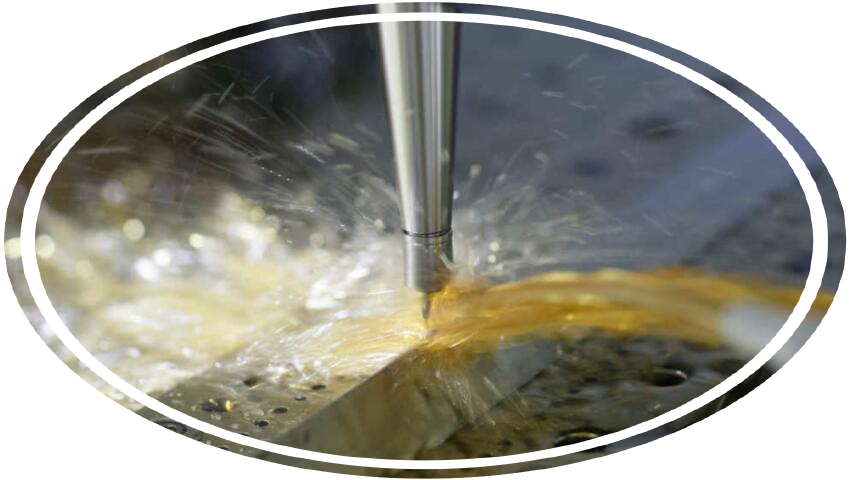
Introduction
In precision engineering, micro-hole machining is crucial in creating miniature holes with high precision and accuracy. These tiny holes find applications in various industries, from medical devices to electronics and aerospace. This article explores the concept of microhole machining, its advantages, different techniques, applications, materials, factors influencing the process, challenges faced, and a glimpse into its future.
Micro-hole machining involves the manufacture of extremely small holes, usually ranging in diameter from microns to millimeters. The process demands high precision, as even the slightest deviation can lead to significant differences in the final product's performance. The diameter is generally in the middle 0.25 to the middle. The hole machining between 005mm is called micro-hole machining. When the aperture is reduced, the requirements for stability, dimensional accuracy, repeatability, and roughness are increased, such as the 0.15mm hole in the processing, and the dimensional tolerance of 100 holes is controlled within 0.00025mm; this type of hole processing is called sub-micro hole processing. Micro-hole machining finds applications in producing fuel injectors, inkjet printer nozzles, medical stents, microelectromechanical systems (MEMS), and more.
Micro-hole machining offers several advantages over conventional hole drilling methods. Some key benefits include:
Enhanced Precision: Micro-hole machining allows for the creation of holes with exceptional precision, ensuring uniformity and accuracy.
Improved Surface Finish: The process results in a smooth surface finish, reducing the need for additional post-processing.
Versatility: Micro-porous machining can be applied to a variety of materials, including metals, ceramics, glass, and polymers.
High Aspect Ratios: It is possible to achieve high aspect ratios (depth-to-diameter ratios) in micro-holes without compromising quality.
Laser drilling employs focused laser beams to remove material and create micro holes. It is a non-contact process that offers excellent precision and minimal thermal damage.
Electrical Discharge Machining (EDM) utilizes electrical discharges to erode material and form micro holes. It is well-suited for conductive materials.
Micro-milling involves using miniature cutting tools to produce micro holes. It is ideal for creating complex geometries.
Abrasive jet machining uses high-pressure jets of abrasive particles to machine micro-holes. It is suitable for brittle materials.
In the medical industry, micro-hole machining is vital for creating surgical instruments, drug delivery systems, and medical implants with intricate designs.
Micro-hole machining is used in manufacturing microelectronics, such as microfluidic devices, printed circuit boards, and semiconductor components.
The aerospace sector benefits from micro-hole machining in producing precision components, such as turbine blades and fuel nozzles.
Micro porous processing can process various materials, including stainless steel, titanium, aluminum, and other metals; Ceramics such as alumina and zirconia; Glass; And polymers such as polycarbonate and PEEK.
The properties of the material being processed, such as hardness, thermal conductivity, and brittleness, greatly impact the processing process.
Selecting the appropriate tooling, including drills and end mills, is critical for achieving precise and consistent results.
Temperature, humidity, and cleanliness of the environment can affect the quality of micro-hole machining.
Micro-hole machining presents some challenges, including micro-tool breakage, burr formation, and difficulties in chip evacuation.
As technology advances, micro-hole machining is expected to become even more precise and efficient. It will continue to revolutionize industries by enabling the production of smaller and more intricate components.
Micro-hole machining is a cutting-edge technology pivotal in manufacturing various miniature components. Its exceptional precision and versatility have made it indispensable across medical, electronics, and aerospace industries. With ongoing advancements, the future of micro-hole machining looks promising, unlocking new possibilities for precision engineering.
★What is the size range of micro holes created through micro-hole machining? Micro-holes created through micro-hole machining typically range from micrometers to millimeters in diameter.
★Can micro-hole machining be applied to non-metallic materials?
Micro-hole machining can be used for non-metallic materials such as ceramics, glass, and polymers.
★How does micro-hole machining differ from traditional hole drilling?
Micro-hole machining differs from traditional hole drilling in size, precision, and methods. Micro-hole machining focuses on creating extremely small and precise holes, often with high aspect ratios.
★What are the primary industries benefiting from micro-hole machining?
The primary industries benefiting from micro-hole machining include the medical, electronics, and aerospace sectors.
★What are some of the challenges faced in micro-hole machining?
Some challenges in micro-hole machining include micro-tool breakage, burr formation, and difficulties in chip evacuation.
Contact: Nina Qiao
Phone: 8613526572721
E-mail: cutting@zy-superhardtools.com
Whatsapp:8613526572721
Add: AUX Industry,Zhengzhou City,Henan Province,China
We chat
